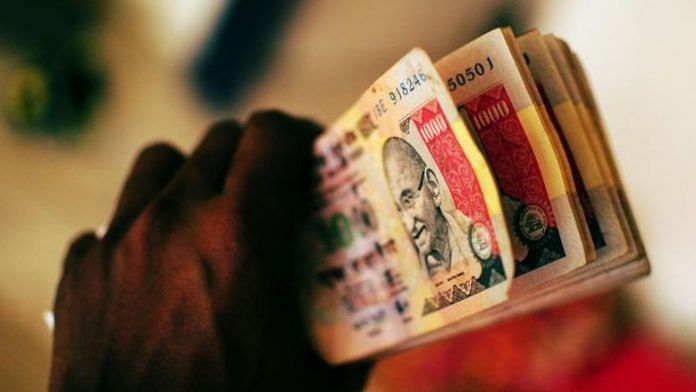On 16 January 1978, the Janata Party-led government demonetised Rs 1,000, Rs 5,000 and Rs 10,000 banknotes to weed out black money.
In 2016, when the Narendra Modi government demonetised high-value currency notes of Rs 500 and Rs 1,000 overnight, the shock 8-November move was called “unprecedented”.
However, in Independent India, the NDA government’s move does have a precedent.
Exactly 41 years ago, on 16 January 1978, Prime Minister Morarji Desai’s government too demonetised high denomination banknotes.
As part of its move, the Janata Party-led government announced that Rs 1,000, Rs 5,000 and Rs 10,000 banknotes would not be treated as legal tender after banking hours on that day. It also decided to keep all banks and their branches besides treasuries of governments closed for transactions the following day, 17 January.
The intention was exactly what the Modi government had claimed too — to weed out black money from the system.
The exercise and impact
The Morarji Desai government had brought in the High Denomination Bank Notes (Demonetisation) Act, 1978 to implement the exercise.
Desai was aided by his finance minister H.M. Patel. Former prime minister Manmohan Singh was finance secretary at the time.
I.G. Patel, the Reserve Bank of India (RBI) governor at the time, was not in favour of the move.
Much like the demonetisation exercise of the Modi government, depositors who had made any false declaration could be punished with a fine or even imprisonment for a term of three years under the Act.
The decision led to a sharp drop in prices of commodities and gold.
However, the overall impact of 1978’s demonetisation was limited as the Indian economy of the time wasn’t a mature one.
“Large number of Indians were left outside the banking net and less than 15-20 per cent of cash in circulation was sucked out compared to 86 per cent in 2016 — very few were in possession of high denomination currency notes. Naturally the impact was minimal,” said a retired public sector bank chairman who didn’t wish to be named.
Besides, ATMs were still not a reality in India.
The larger intent, however, of weeding out illegal money, wasn’t met.
Also read: Before demonetisation, Modi govt nudged RBI to introduce ‘shagun’ Rs 11, Rs 21 bank notes
Past instances
Another demonetisation exercise was carried out in India while still under British rule in 1946 — with the same aim.
At the time, banknotes of Rs 1,000 and Rs 10,000 were withdrawn, but they were brought back into the system later by the RBI.
Banknotes of Rs 1,000 were also re-introduced in November 2000 to reduce the overall volume of currency notes being circulated.
Also read: Modi govt’s reservation bill is as bad as demonetisation & DMK has the guts to expose it




5000 Rupees Note of India Government is offered for sale to affluent investors for pride collection . It is issued by BOMBAY office and signed by H V R IYENGER. It is in very good condition. Interested buyer may please contact at Whatsapp no +919199533956
In November 2016, as the chaos began to unfold, no one could have foreseen how deep and lasting the economic damage would be. It is going to exact a high political price.